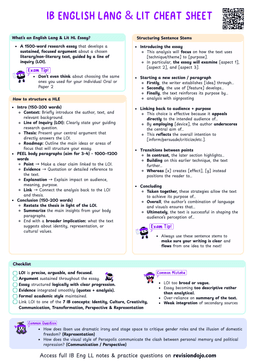Sample Analysis: A Step-by-Step Guide
- Alright, let’s walk through a real example and break it down using PEEL.
- Basically, PEEL is your cheat code for writing strong, convincing analysis. It helps your ideas make sense and stick.
- By the end of it, you'll know how to spot techniques, figure out what they’re doing, and link it all back to what the writer’s really trying to say.
PEEL = Point, Evidence, Explanation, Link
- P: Point
- Start with a clear idea or argument.
- What is the writer showing or saying through the text?
- E: Evidence
- Drop in a quote or describe a specific moment.
- This should show how the writer is doing what you just said.
- E – Explanation
- Unpack how the technique works.
- What effect does it have? Why did the writer choose it?
- What does it make the reader think or feel?
- L – Link
- Tie it all back to your main point.
- How does it support your overall argument or the text’s big idea?
Step 1: Read the Passage
“I crept through the silence, each step resonating like a drumbeat. You cannot turn back now.”
Step 2: Deconstruct the Passage
- What techniques are being used?
- What images, tone, or emotions are created?
- What themes or ideas emerge?
- What effect does the language have on the reader?
- What is the writer’s purpose?
| Technique | Identification | Effect |
|---|---|---|
| Voice | Second-person (“You”) | Draws the reader directly into the scene, heightening suspense and urgency. |
| Diction | “Silence,” “resonating” | Creates tension—quiet broken by sudden sound suggests looming danger. |
| Imperative tone | “You cannot turn back” | Establishes a sense of command and inevitability—there’s no escape. |
| Symbolism | Drumbeat-like footsteps | May imply a march toward something inevitable or dangerous. |
Step 3: Using PEEL To Structure Your Analysis
- Point:
- The author uses second-person narration and sound imagery to create a powerful sense of suspense and urgency, immersing the reader in the character’s tense psychological state.
- Evidence:


